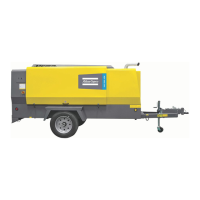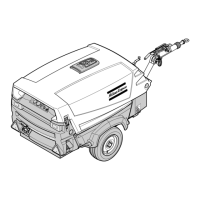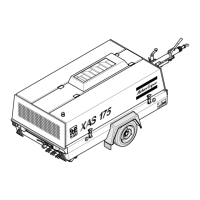1310 3011 65 7
11 Use the correct type and size of screwdriver for the
job. The bit must match the fastener.
12 A screwdriver with rounded edges will slip; it needs to
be redressed or discarded.
13 Never use a screwdriver or any other tool near a live
wire or electrical component. Plastic covering of
handles is for comfort and grip only. They are not
intended to act as insulation if such is not clearly
marked by the manufacturer.
14 Never strike a hammer against a hardened object; use
a soft drift against the object and strike against the
drift.
15 Strike the object with the full face of the hammer.
16 Never use a hammer with a loose head.
17 Discard a hammer with chipped or mushroomed face.
18 Never use a chisel or punch with a chipped or
mushroomed striking face.
19 Always pull on a wrench or socket handle, if possible,
and adjust your stance to prevent a fall if something
lets go.
20 Wear approved eye protection when using percussion
tools or when scraping, chipping, shaving or grinding.
21 Wear protective gloves when holding a chisel or
punch.
1.6 Batteries
1 The electrolyte in batteries is a sulphuric acid solution
which is fatal if it hits your eyes, and which can cause
burns if it contacts your skin. Therefore, be careful
when handling batteries, e.g. when checking the
charge condition.
2 Install a sign prohibiting fire, open flame and smoking
at the post where batteries are being charged.
3 When batteries are being charged, an explosive gas
mixture forms in the cells and might escape through
the vent holes in the plugs.
Thus an explosive atmosphere may form around the
battery if ventilation is poor, and can remain in and
around the battery for several hours after it has been
charged.
Therefore:
- never smoke near batteries being, or having recently
been, charged,
- never break live circuits at battery terminals,
because a spark usually occurs.
4 When connecting an auxiliary battery (AB) in parallel to
the unit battery (CB) with booster cables: connect the +
pole of AB to the + pole of CB, then connect the - pole
of AB to the mass of the unit. Disconnect in the
reverse order.
1.7 Ether fuel Systems
Ether fuel systems are used for diesel cold starting.
1 Do not use ether as a starting aid in conjuntion with
other stating aids (i.e. glow plug, air intake heater etc..)
as an explosive condition may result in severe engine
damage or personal injury.
2 This type of fuel is extremely flammable, toxic and
poisonous. Avoid contact with eyes or skin and breathing
the fumes. If accidentally swallowed, do not induce
vomiting but call a physician immediately.
3 If fuel enters or fumes irritate the eyes, flush the latter with
large quantities of clean water and call for medical aid.
4 Before operating ether cold starting aids, read the
instructions and the container label.
5 Never operate ether cold starting aids while the engine is
running as this can cause severe damage.
6 When maintenance, tests or repair has to be performed, do
so in a well-ventilated area only, away from heat, open
flame or sparks. Ascertain that the area is clearly marked
out with signs prohibiting fire, open flame and smoking.
7 Wear eye protection when testing a system. Make sure
that openings of a spray container, valve, tube or atomizer
are pointed away from yourself and others while testing.
8 Do not store ether containers in temperatures above 70ºC
(160 ºF),
9 Do not incinerate, puncture or attempt to remove the center
core valve, side safety valve or any other part of an ether
container.
1.8 Pressure vessels
Maintenance / installation requirements:
1 The vessel can be used as a pressure vessel or as a
separator and is designed to hold compressed air for the
following applications:
- pressure vessel for compressor.
- medium AIR/OIL,
and operates as detailed on the data plate of the vessel:
- the maximum working pressure in psi,
2 The pressure vessel is only to be used for the applications
as specified above and in accordance with the technical
specifications. Safety reasons prohibit any other
applications.
3 National legislation requirements with respect to re-
inspection must be complied with.
4 No welding or heat treatment of any kind is permitted to
those vessel walls which are exposed to pressure.
5 The vessel is provided and may only be used with the
required safety equipment such as manometer,
overpressure control devices, safety valve, etc.
6 Draining of condensate shall be performed regularly when
vessel is in use.
7 Installation, design and connections should not be changed.
8 Bolts of cover and flanges may not be used for extra
fixation.
1.9 Safety valve
All adjustments or repairs are to be done by an authorized
representative of the valve supplier.

